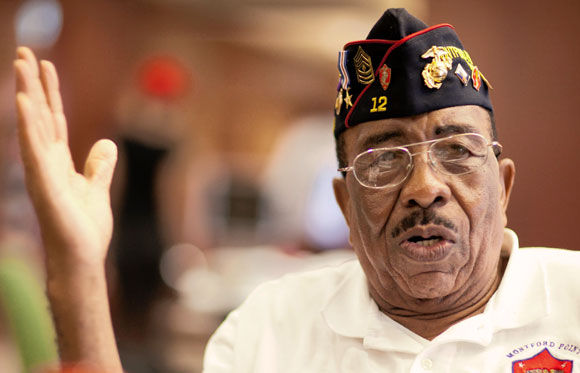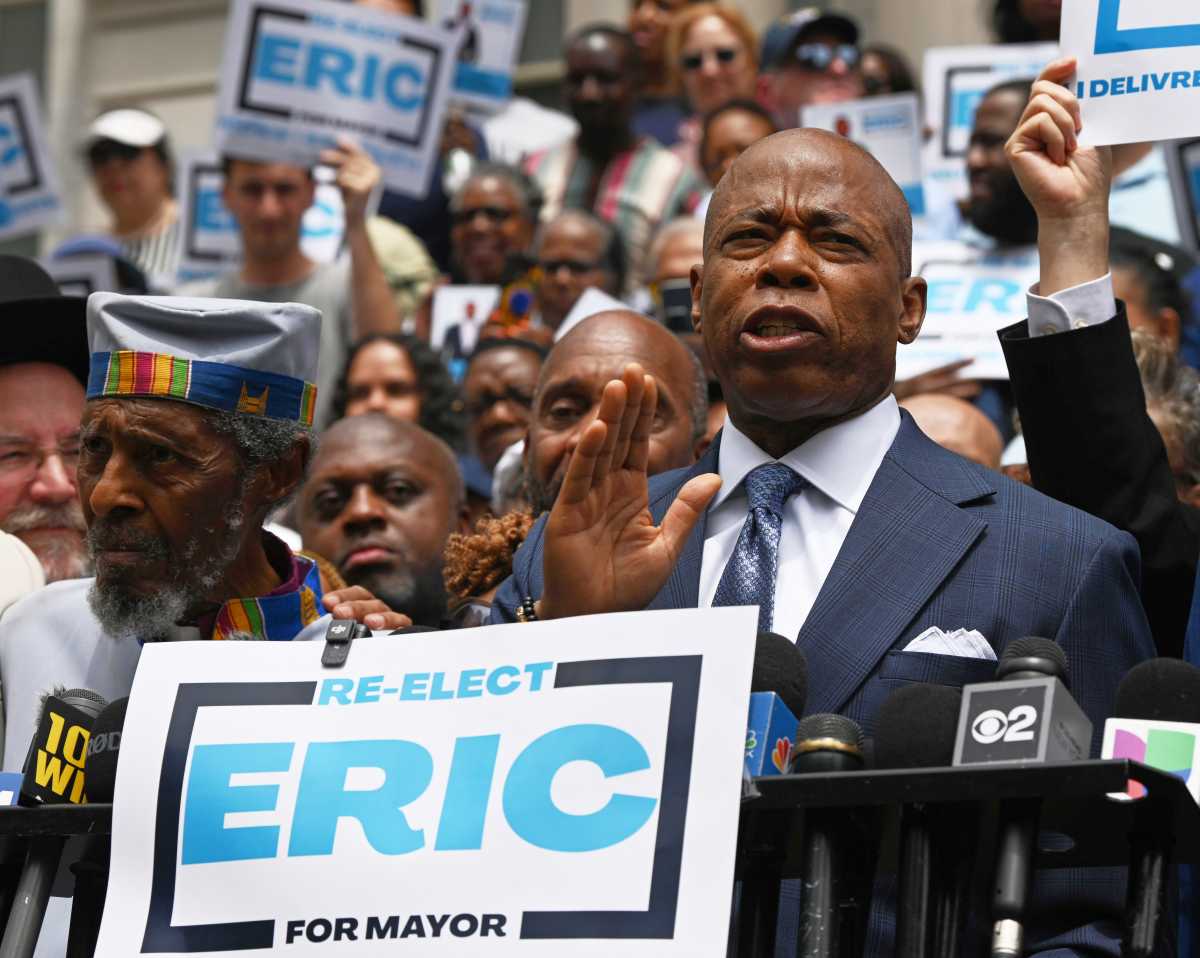Every Marine remembers his arrival at recruit training. Marines shared feelings of fear, anxiety and doubt when faced with the challenges of boot camp. The Marines of Montford Point faced even greater obstacles than the rigorous training of the average recruit. These brave men broke through racial discrimination to become one of the few and the proud: the first African-American Marines.
Commandant of the Marine Corps Gen. James F. Amos honored the surviving Montford Point Marines in a formal salute at the Marine Barracks Washington Evening Parade on Aug. 26. Last year, congress declared this day as Montford Point Marine Day to honor the anniversary of the first African-American recruits’ arrival for basic training at Montford Point, NC, in 1942.
Today, African Americans comprise roughly 11 percent of the Marine Corps. These Marines wouldn’t be serving today without the groundwork laid by these first black Marines who enlisted and trained from 1942 to 1949.
Edward Q. Hicks grew up in Philadelphia and arrived for basic training April 30, 1948. Like many of the early Montford Point Marines, Hicks thought he would be training at Parris Island. The realization that black recruits trained at a separate facility, although shocking to Hicks, didn’t change his determination to join the Corps.
“I guess it didn’t matter because I saw we were all Marines,” Hicks said.
Barnett Person, a native of Montgomery, AL, dreamed of joining the military since he was 12. So at the age of 16, Person walked into a recruiting office and told the staff sergeant he wanted to join the ‘submarines’, he said. In order to join, Person lied about his age.
“I told him I was 18,” Hicks said. “I was lying like hell.”
After proving eligible to join, Person arrived at Montford Point July 23, 1946 to begin his training. Person didn’t care where he trained, he said. His primary concern was getting his own set of dress blues.
Person and the other recruits were loaded into a dump truck destined for Montford Point Camp, he said. Upon arrival, they were simply dumped out of the truck like a pile of dirt. The recruits were brought into the office of Gilbert ‘Hashmark’ Johnson, one of the first African Americans to enlist in the Marine Corps.
“Hashmark stood up and he just kept going up,” Person remembered of Johnson’s stature. “My nerves were gone.”
From that point onward, Hicks and Person said their experiences during boot camp were much like that of any other, with plenty of running, individual training sessions and homesickness. Although the early drill instructors at Montford Point were white, by the time Person and Hicks joined, their instructors were the first African-American Marines who joined in the early ’40s.
Once they completed recruit training, Person and Hicks were assigned to all black companies. African-American Marines were given uniforms that were different from those worn by white Marines.
Hicks said that within the Marine Corps racism was more on an individual basis than an overall problem. In 1949, the Marine Corps integrated its forces so that black and white Marines worked and lived together. Discrimination, however, was still an issue.
The Corps was an example of how change could and would happen.
“Even though the Marine Corps had integrated, the civilian world had not,” Hicks said. “At some point, you’ve got to make a stand.”
While stationed in Pennsylvania, Hicks recalled a time when a landlady refused to rent an apartment to him and his wife because they were black. Hicks, who was in uniform, turned to the lady and said, “Ma’am, I went to combat and war so that you can have your decision. That’s your right and I fought for it.”
Although Person and Hicks, as well as the other early African-American Marines were faced with discrimination on many occasions, Hicks said they continued to do their jobs.
“I could see that the Marine Corps was turning around,” Hicks said. “It was getting better.”
And things did get better, as black Marines proved their abilities in combat and on the home front. Both Person and Hicks went on to have successful careers in the Corps. Person retired in 1974 as a 1st sergeant with a Silver Star and two Purple Hearts, serving in both World War II and Korea. Hicks retired as a captain with a Bronze Star and a Navy Commendation with combat valor in Korea and Vietnam.
Hicks and Person believe their story is one the younger generation should be aware of.
“They need to know the problems their forefathers went through so that they can do whatever they want,” Hicks said.
Person said that in the same way the earliest Montford Point Marines made it easier for Hicks and himself, all the first African-American Marines made possible the present opportunities for black Marines within the Corps.
“We showed that we could be Marines just like anyone else,” Person said. “Marines need to be proud, work hard and thank the guys who went on before them.”
Commandant James F. Amos is urging Congress to award the Montford Point Marines the Congressional Gold Medal, the nation’s highest award given to civilians for distinguished service.























